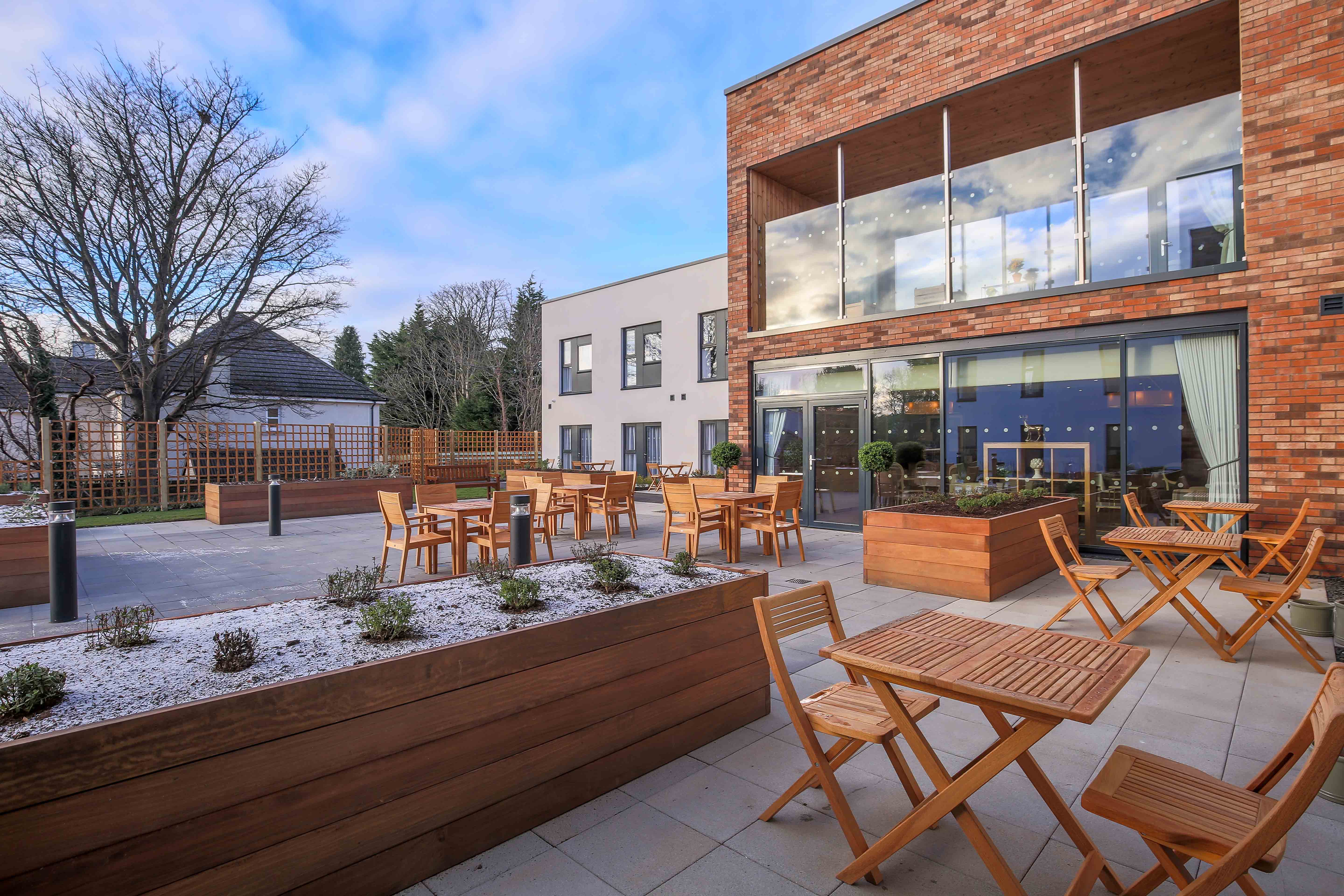Increasing demand for care homes
Written by Andrew Barlow
We all know that an ageing population is a key component of the UK demographic profile. People  aged over 85 are the fastest growing part of the UK population which is undergoing a significant age shift. According to the Office for National Statistics, the proportion of the population over 85 years old in the UK is forecast to more than double over the next three decades, from 2.5% in 2021 to 5.2% in 2051.
aged over 85 are the fastest growing part of the UK population which is undergoing a significant age shift. According to the Office for National Statistics, the proportion of the population over 85 years old in the UK is forecast to more than double over the next three decades, from 2.5% in 2021 to 5.2% in 2051.
According to the Knight Frank UK Care Homes Trading Performance Review 2023, average occupancy levels have increased to 86.4%, up from 83.4% in 2022, and average weekly fees have grown approximately 9.6% to £1,074 per week, showing a strong recovery since the pandemic. In terms of regional occupancy across the UK, this is fairly evenly split, but in terms of the income profile of homes, the percentage share of the over 85s is far greater in private pay / self-funded settings than in local authority homes indicating a changing wealth profile amongst the age demographic.
Care home market undergoing structural changes
Over the last decade, the number of new beds built vs beds being withdrawn from the market has more or less kept at an equilibrium. However, behind this there have been a number of changes in the structure of the market.
The number of care home beds stood at 488,518 at the beginning of January 2022 but by the end of the year, this had fallen to 487,485, with a loss of just 1,033 care home beds. The sector has faced the adversity of the pandemic across 2020 and 2021, and has been confronted by high costs with soaring energy bills and recruitment in the post-Brexit environment, leading to a reliance on more costly agency staff. The financial pressures have therefore caused many providers to close homes.
Independent operators, both for profit and not-for-profit, have continued to take market share from those owned and operated by the public sector. At the same time, older and obsolete properties have been withdrawn from the market and replaced by more modern and larger care homes.
It is critical that the UK’s care provision can keep up with demand, growing in line with the population forecasts. We need to see the number of homes and beds growing, not shrinking. The consequence is elderly people stuck in NHS facilities, with the knock-on effects for waiting times and service for all NHS users.
Trend towards bigger care homes
Across the UK, the  number of beds per care home has risen from 39.2 to 39.7 residents per care home showing a move towards bigger care homes. This reflects the gradual phasing-out of smaller, non-purpose built care homes. The regions with the biggest care homes are in Scotland and the North East, with both having an average of 44 residents per care home. New homes equipped with en-suite wetrooms help prevent the spread of pandemic more effectively. They are also more energy-efficient, and with care homes required to meet strict regulations to be heated above a certain temperature, this may help with keeping fee increases down for residents. In the private pay sector however, typical bed numbers for optimum financial efficiencies will range from 60-70 beds, considerably above the national average.
number of beds per care home has risen from 39.2 to 39.7 residents per care home showing a move towards bigger care homes. This reflects the gradual phasing-out of smaller, non-purpose built care homes. The regions with the biggest care homes are in Scotland and the North East, with both having an average of 44 residents per care home. New homes equipped with en-suite wetrooms help prevent the spread of pandemic more effectively. They are also more energy-efficient, and with care homes required to meet strict regulations to be heated above a certain temperature, this may help with keeping fee increases down for residents. In the private pay sector however, typical bed numbers for optimum financial efficiencies will range from 60-70 beds, considerably above the national average.
Sustainable living and investment with social impact
 We are also seeing a rise in a generation of conscious investors, for whom environment, social and governance (ESG) factors matter. A 2021 study reported that 21% of respondents plan to make an ESG focused investment in the coming 12 months, while 25% intend to do so by 2025. There is a strong ESG driver in investing in elderly care, creating a desirable environment in a sustainable way. It builds ESG into an investment portfolio, with a focus on social impact.
We are also seeing a rise in a generation of conscious investors, for whom environment, social and governance (ESG) factors matter. A 2021 study reported that 21% of respondents plan to make an ESG focused investment in the coming 12 months, while 25% intend to do so by 2025. There is a strong ESG driver in investing in elderly care, creating a desirable environment in a sustainable way. It builds ESG into an investment portfolio, with a focus on social impact.
More properties in this space has a knock-on effect in that it frees up existing housing stock to meet the bigger property shortage crisis across the UK. Crucially, it can also free up vital hospital beds as we can give elderly patients a viable home with the support they need after being discharged.
Local authorities also need to take some responsibility for housing provision for the elderly and this is going in the right direction. In August 2021, the Government announced a funding injection from Homes England for 255 new homes for older people. Obligations are changing to provide for older people and planning policy is coming in line with providing consent for developments to go ahead. The benefits are significant in reducing the burden of social care costs on the public purse.
Furthermore, as more attractive developments are built, the providers are going to be better equipped to understand the nature of the demand and older generations will see and hear about great examples from peers and in their communities. Many of the operators we work with currently dedicate 20-30% of their rooms for local authorities, which is another way to increase affordability and inclusivity.
Care Home Property Market
According to Experian Market IQ (September 2021), the estimated worth of the residential nursing care industry was approximately £7.7 billion with an annual growth of 1.4% from 2016 to 2021, and this continues to grow. They estimate the market value worth for 2024 to 2025 will be around £7.77 billion and from 2025 to 2026, in the region of £8.11 billion. With this growing need for more care homes, existing businesses are increasin gly searching for opportunities to buy and expand, whilst being regulatory compliant.
gly searching for opportunities to buy and expand, whilst being regulatory compliant.
Against this backdrop, care homes are seeing strong occupancy levels, but also providing investors with an inflationary hedge as cost rises have been absorbed by customers, protecting margins and enabling providers to continue investing in staff pay, training and the assets. Investor and consumer demand has remained strong for retirement living generally, particularly for the emerging rental product. However, constrained supply and the lack of mature operators means there have been limited investment opportunities.
We expect to see upward pressure on rents, which will enable and encourage third party developers to meet increasing demand and deliver on ESG strategies. Care homes tend to perform strongly, even in economic downturns as it is a needs-based rather than consumer-based asset class.
At Barwood, with our partner Perseus Land & Developments, we have now undertaken twelve projects through our Growth Fund series. For the Barwood Growth Fund V, we are currently sourcing sites suitable for known operator demand, and either obtaining planning consents to meet this demand, or enabling development of care homes where operators can commit to long term institutional leases, thereby creating attractive income streams for investors.
